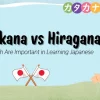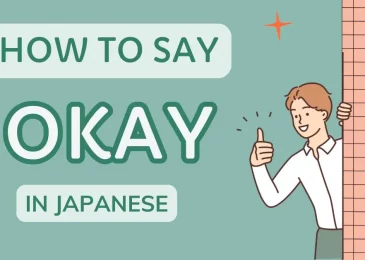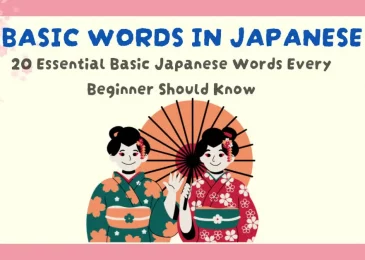The Japanese writing system is renowned for its complexity and beauty. Unlike most languages that rely on a single script, Japanese combines three distinct types of characters – Hiragana, Katakana, and Kanji. Each serves a unique purpose, contributing to the rich, multifaceted nature of the language. In this guide, we’ll explore the origins, functions, and learning strategies for each script to help you master this fascinating system.
The three components of the Japanese writing system
Hiragana is a phonetic syllabary comprising 46 characters. Each character represents a specific sound, making Hiragana essential for understanding Japanese grammar. It is primarily used for native Japanese words that lack Kanji, as well as grammatical elements such as particles (は, が) and verb or adjective endings. Another key function is furigana, small Hiragana characters placed above or beside Kanji to indicate pronunciation, helping readers understand unfamiliar characters. For example, in the sentence わたしはがくせいです (Watashi wa gakusei desu), meaning “I am a student,” the particles は (wa) and が (ga), along with the pronoun わたし (watashi), are written in Hiragana. Its smooth, rounded appearance gives it an inviting look, making it accessible for learners.
1. Hiragana (平仮名)
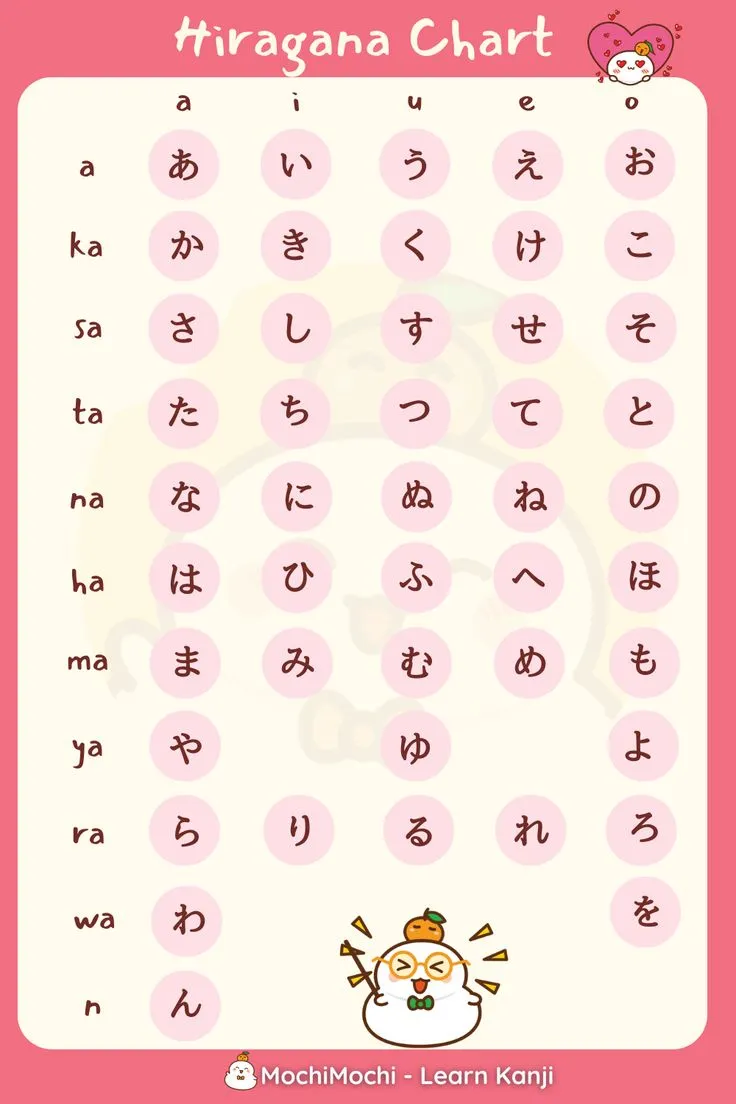
2. Katakana (片仮名)
Katakana shares the same 46 phonetic sounds as Hiragana but serves different functions. It is primarily used for foreign loanwords, such as コーヒー (kōhī, coffee), and foreign names like ジョン (Jon, John). Katakana also appears in onomatopoeia, sound effects, and scientific or technical terms. Additionally, it is often used for emphasis, similar to italics in English. For example, the word メニュー (menyū) means “menu” and is a loanword from English. Its angular, sharp design provides a modern and technical aesthetic, distinguishing it from the softer Hiragana.
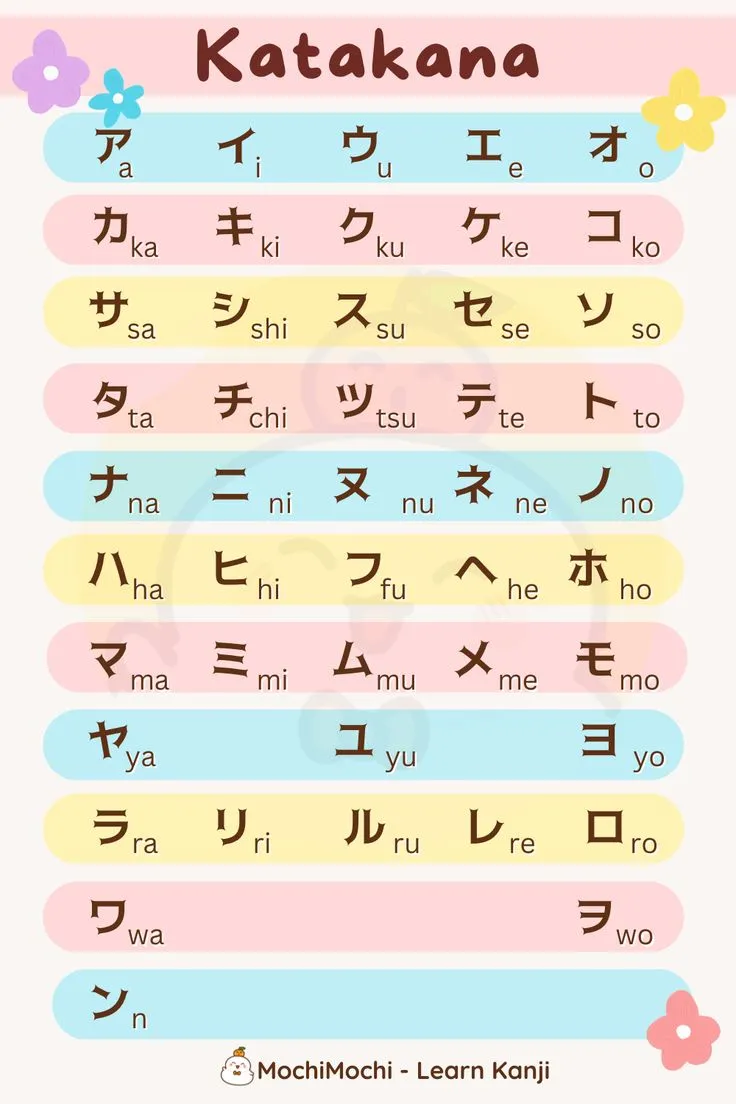
3. Kanji (漢字)
Kanji are logographic characters borrowed from Chinese, with each character representing a specific meaning. Unlike Hiragana and Katakana, which denote sounds, Kanji convey ideas, enabling concise and nuanced writing. They are used for nouns, verb roots, and adjectives. For example, 山 (yama) means “mountain,” and 学 (gaku) in 学校 (gakkō) means “school.” Kanji often have multiple readings depending on context, which adds complexity but also depth to the language. For instance, 日本 (Nihon or Nippon) means “Japan.” Despite its challenges, Kanji enhances efficiency and allows for a richer expression of meaning.
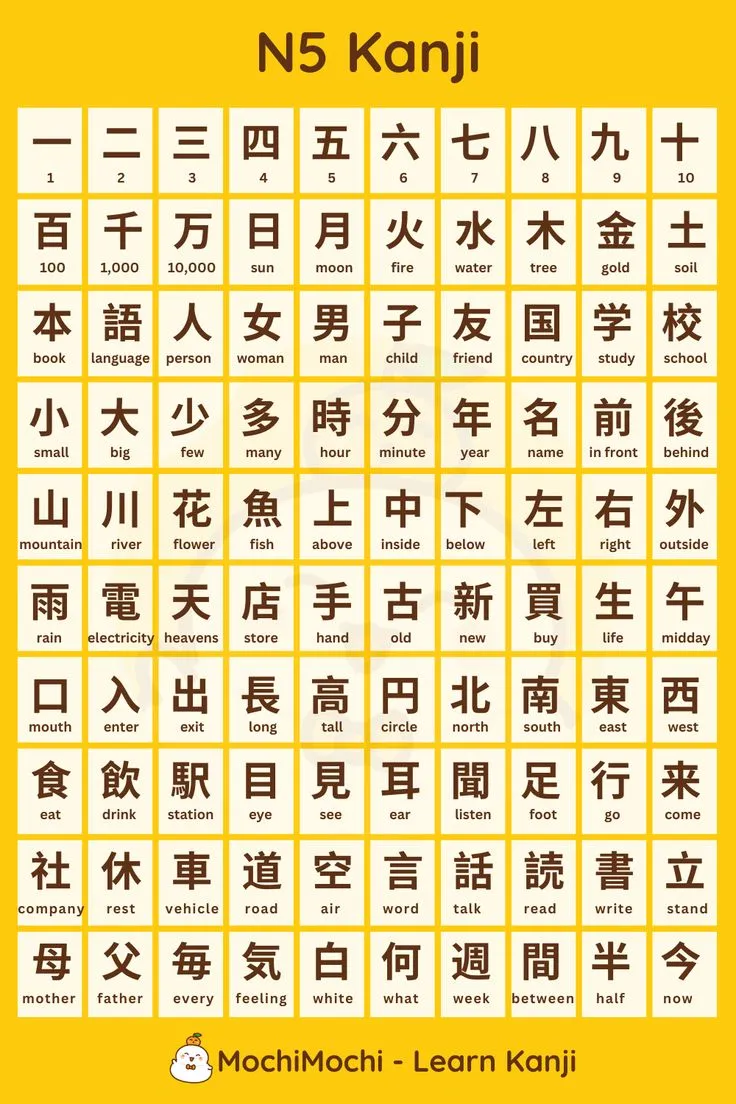
Purpose and usage of each character type
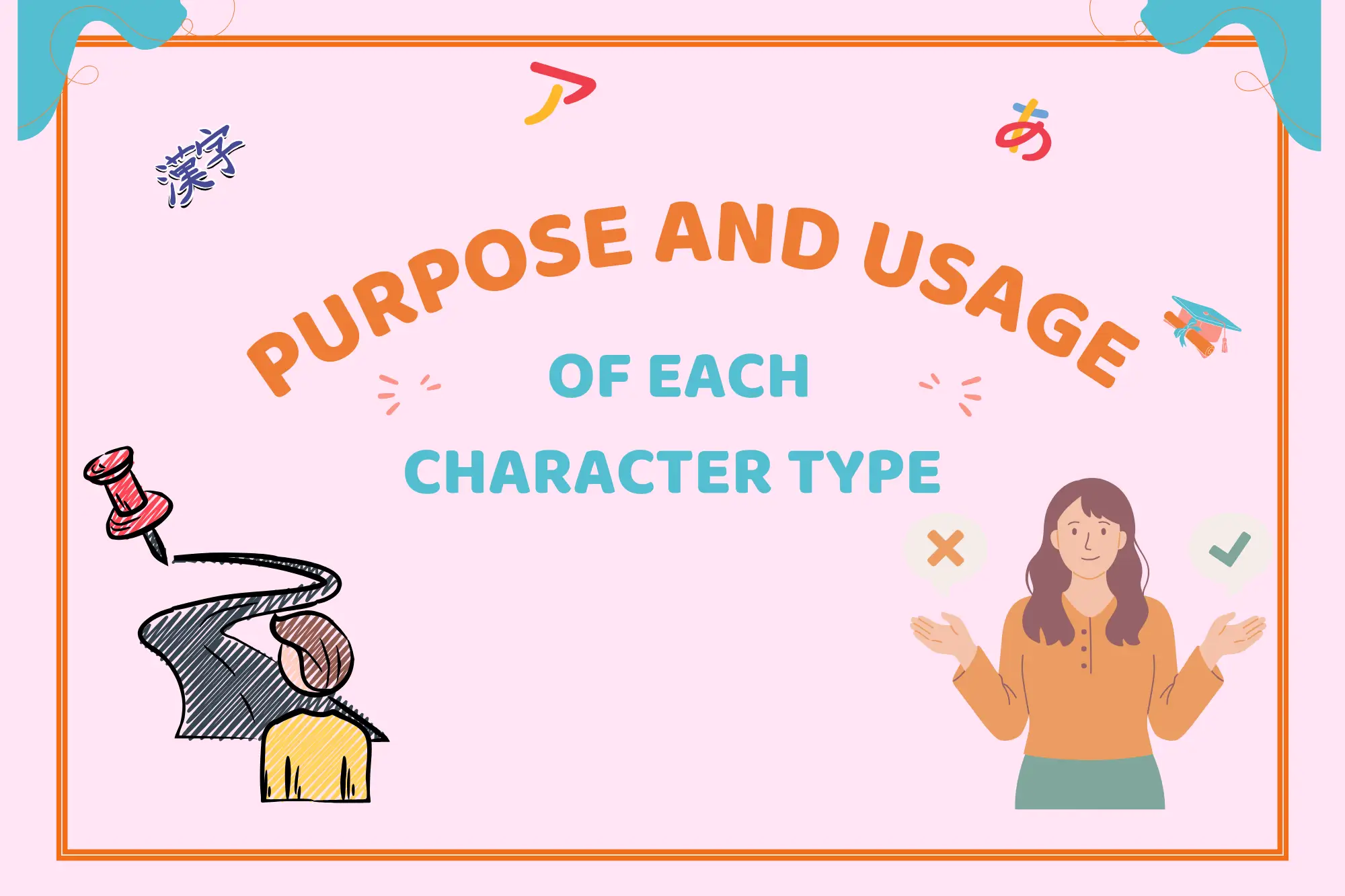
The Japanese writing system is unique in its ability to blend three distinct scripts—Hiragana, Katakana, and Kanji—within a single piece of text. This interplay of scripts is one of the defining characteristics of Japanese writing, allowing for a highly functional and nuanced form of communication. Each of the three scripts serves a specific and distinct role in the language, contributing to both its grammatical structure and expressive capacity. Understanding how these scripts interact is crucial for anyone learning Japanese, as it provides insights into the logic behind sentence construction and the rich layers of meaning embedded in the language.
1. Hiragana: The core of grammar and native words
Hiragana is the foundation of Japanese grammar and is primarily used for writing native Japanese words that do not have a corresponding Kanji character. This includes function words such as particles, verb and adjective endings, and grammatical elements that form the backbone of sentence structure. Without Hiragana, the fluidity and grammatical cohesion of the Japanese language would be impossible.
In addition to grammatical functions, Hiragana is also used for native vocabulary that lacks Kanji, especially in cases where the Kanji is either too complex, uncommon, or not frequently used. For example, the word ねこ (neko), meaning “cat,” is written entirely in Hiragana because it is a native Japanese word. Hiragana is also used for furigana, small characters written next to Kanji to indicate pronunciation, often used in texts aimed at beginners or learners. This helps to ease the learning process by clarifying the reading of more difficult or uncommon Kanji.
2. Katakana: Transcribing foreign elements and emphasizing words
Katakana, while also phonetic, serves a different purpose compared to Hiragana. It is primarily used for transcribing foreign loanwords, scientific terms, and onomatopoeia. This makes Katakana indispensable in an increasingly globalized world, where foreign terms and names are frequently adopted into the Japanese language. For instance, the word for “coffee” is written as コーヒー (kōhī) in Katakana, and the word for “computer” is コンピュータ (konpyūta). These are borrowed words from English, and Katakana allows them to be seamlessly incorporated into Japanese sentences.
Katakana also plays a role in emphasizing words, much like how italics are used in English to highlight specific terms or phrases. For example, the phrase これはカフェです (Kore wa kafe desu), meaning “This is a café,” would emphasize the word “café” using Katakana to draw attention to it. This usage mirrors how Katakana is often used for technical or modern terms that distinguish them from native vocabulary.
Moreover, Katakana is used to represent sound effects, particularly in manga, advertising, and other media where onomatopoeic expressions are essential. For example, ワンワン (wanwan) is used to represent the sound a dog makes, and ドキドキ (dokidoki) represents the sound of a heartbeat or feeling nervous. These playful, expressive applications of Katakana give the script a dynamic and energetic feel.
3. Kanji: The key to meaning and precision
Kanji are logographic characters borrowed from Chinese, and each one represents an idea or concept rather than a sound. Kanji are integral to Japanese writing because they convey the core meaning of most words, allowing for a more concise and nuanced expression compared to phonetic scripts. For example, the Kanji 山 (yama) means “mountain,” while 学 (gaku) in 学校 (gakkō) means “school.” The presence of Kanji adds richness and specificity to the language, especially in formal or academic contexts.
Unlike Hiragana and Katakana, which have one-to-one mappings between characters and sounds, Kanji often have multiple readings, depending on the context. These readings include on’yomi (音読み), which are the original Chinese readings, and kun’yomi (訓読み), which are the native Japanese readings. For instance, the Kanji 学 can be read as gaku in 学校 (gakkō) or manabu (学ぶ) when used as a verb meaning “to learn.” This duality of readings allows Kanji to express complex ideas in a more compact form while also reflecting the linguistic evolution of Japanese.
In addition to representing words or concepts, Kanji characters often carry multiple layers of meaning, making them highly efficient in conveying information. For example, the Kanji word 東京 (Tōkyō) means “Tokyo” in English, with 東 (tō) meaning “east” and 京 (kyō) meaning “capital.” Together, they convey the idea of “The Eastern Capital.” This combination of individual meanings within Kanji is an essential feature that allows for a depth of expression not achievable with phonetic scripts alone.
4. Blending scripts in a single sentence
The most remarkable aspect of the Japanese writing system is the way all three scripts can coexist within a single sentence, each fulfilling a distinct purpose. For instance, consider the sentence:
ねこはカフェにいます (Neko wa kafe ni imasu), meaning “The cat is in the café.”
In this sentence:
- ねこ (neko) is written in Hiragana because it is a native Japanese word.
- は (wa) is a grammatical particle also written in Hiragana, marking the topic of the sentence.
- カフェ (kafe) is written in Katakana, as it is a foreign loanword borrowed from English (“café”).
- に (ni) is another particle written in Hiragana, indicating the direction or location of the action.
- います (imasu) is written in Hiragana as well, since it is a verb that does not require Kanji in its basic form in this context.
This integration of all three scripts in a single sentence demonstrates the flexibility and efficiency of the Japanese writing system. Each script plays a crucial role in maintaining clarity and meaning, while also giving the writer a range of tools to express various aspects of language—grammar, foreign influences, and conceptual depth.
The ability to use Hiragana for native elements, Katakana for foreign terms, and Kanji for core meanings makes the Japanese writing system incredibly versatile. It allows writers to convey subtle differences in tone, formality, and emphasis while also maintaining precision in communication. This multi-script approach is what gives Japanese its distinct, sophisticated structure, and understanding how each script functions is key to mastering the language.
Romanization of Japanese (Romaji)
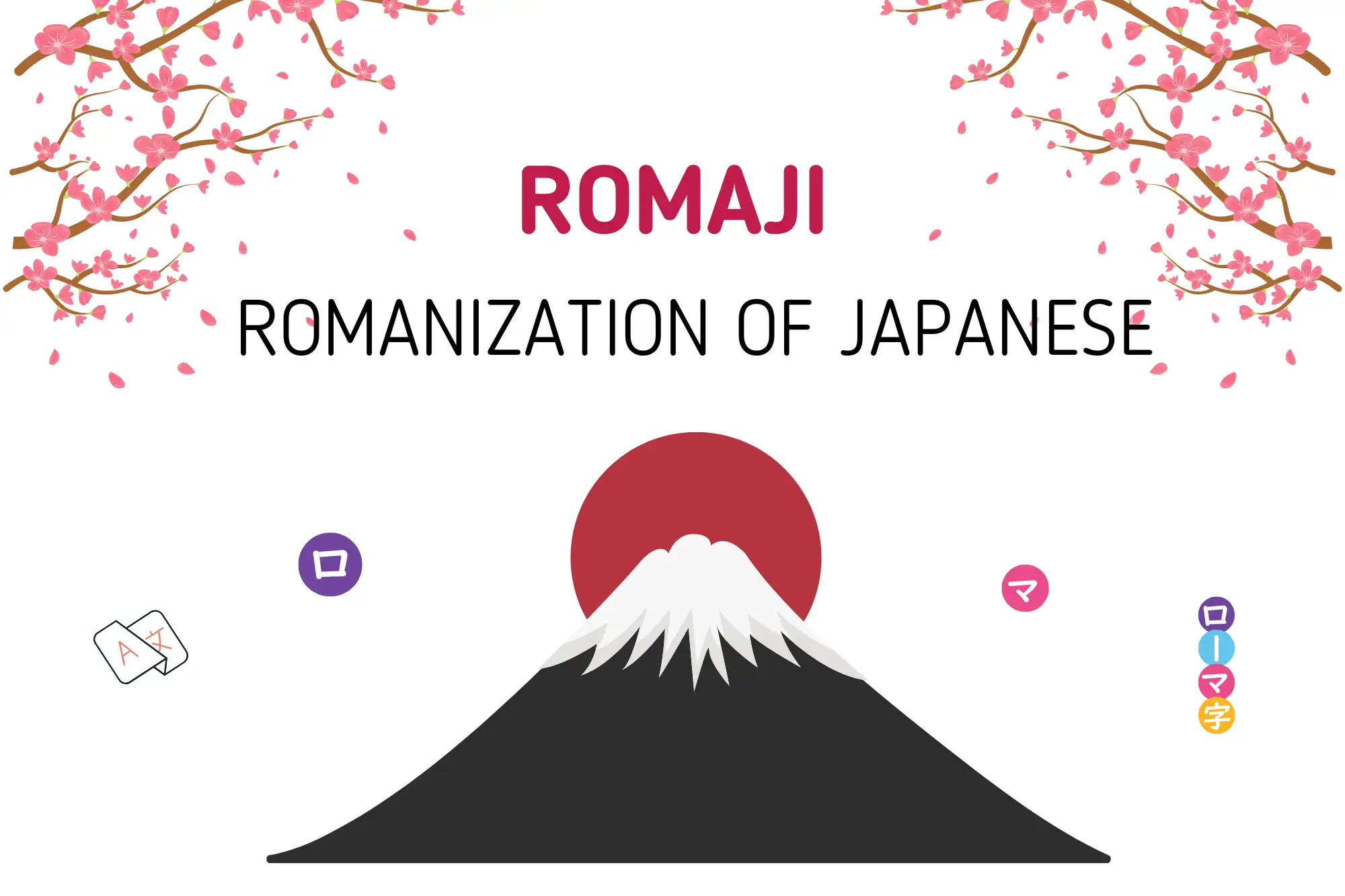
Romaji refers to the use of the Latin alphabet to represent Japanese sounds. It is especially helpful for beginners who are not yet familiar with Hiragana, Katakana, or Kanji, allowing them to focus on pronunciation and vocabulary. For example, こんにちは is written as konnichiwa in Romaji, making it easier for learners to understand.
However, Romaji has limitations. It doesn’t capture Japanese pitch accent, which can change the meaning of words with the same pronunciation, like hashi (橋 – bridge, 箸 – chopsticks). Additionally, Romaji can cause confusion with homophones, as it doesn’t distinguish between words that sound the same but have different meanings.
Romaji is rarely used in native Japanese texts, except in specific contexts like brand names or signage aimed at international audiences. While helpful for beginners, Romaji is not a substitute for learning the Japanese scripts, which are essential for reading and writing fluently.
How to learn the Japanese writing system

1. Tips for learning Hiragana and Katakana
a. Start with Hiragana
- Learn Basic Characters: Begin by learning the 46 basic Hiragana characters. Break them down into manageable groups of 5 or 10 characters at a time. This way, you can focus on memorizing a small set before moving on to the next group.
- Use Flashcards and Apps: Use flashcards to help you memorize the characters. You can make physical flashcards or use digital ones on apps. Apps like MochiKana offer interactive learning features that help reinforce character recognition with spaced repetition, quizzes, and mnemonic devices. With MochiKana, you will learn each character with multiple games such as flashcards, writing, and quizzes. Additionally, MochiKana offers test and practice exercises helping you get familiar with the letters fast and effectively.
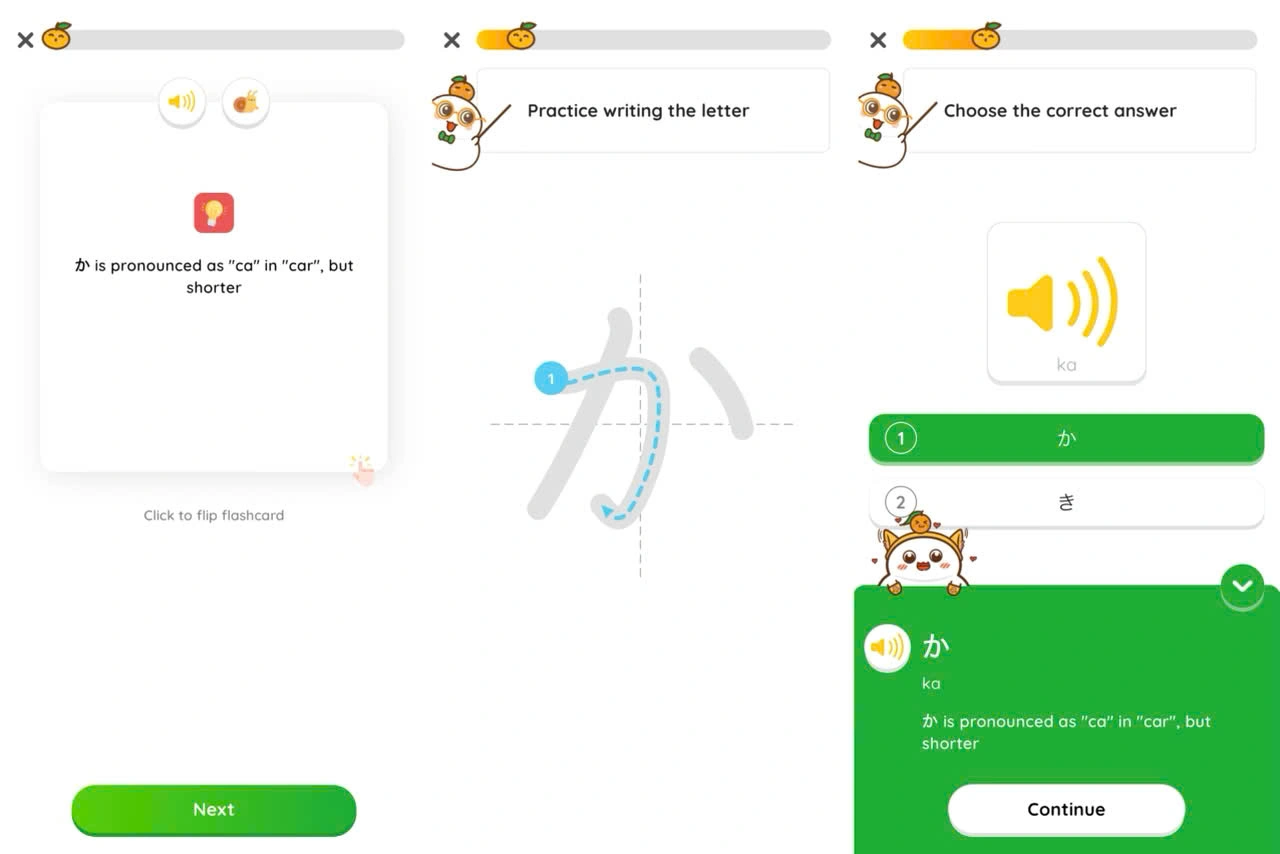
- Practice Writing: Write each Hiragana character multiple times. This helps build muscle memory, and your hand will become familiar with the unique shapes of each character. Practicing in a notebook or using apps that simulate writing can enhance this process.
- Mnemonic Devices: Use mnemonic techniques to link each character with an image or a story. For instance, the character あ (a) looks like a person with their arms stretched out, which you can associate with the sound “a.” These visual associations will make the characters easier to recall.
- Reading Simple Materials: Once you’ve learned a few characters, start reading simple materials written in Hiragana. Children’s books or Japanese websites aimed at beginners often use basic Hiragana and can be a great starting point.
b. Move on to Katakana
- Start with Basic Katakana: Katakana is learned in the same way as Hiragana, but since Katakana characters are more angular, they might take a bit longer to memorize. Again, use flashcards and apps like MochiKana to help you with recognition.
- Recognize Loanwords: Katakana is used for foreign loanwords. Once you’re familiar with the basic characters, start reading texts that feature many foreign loanwords, such as menus, product names, and tech-related articles, to practice your Katakana reading skills.
- Practice Writing Katakana: Just like Hiragana, write out each Katakana character multiple times until you’re comfortable with the strokes. Using apps with stroke order animations can be helpful to learn the correct way to write each character.
2. Strategies for learning Kanji
Learning Kanji can be the most challenging part of mastering the Japanese writing system, as there are thousands of characters, and each one can have multiple readings. However, with the right approach, you can gradually build your Kanji knowledge over time. Here’s how to tackle Kanji learning:
a. Start with Common Kanji
- Learn High-Frequency Kanji: Focus on learning the most common Kanji first. There are about 2,000 Kanji that are used frequently in daily life, and starting with these will allow you to read and understand most texts. In Japan, students learn around 1,000 Kanji by the time they graduate from elementary school.
- Understand Radicals: Radicals are the building blocks of Kanji. Most Kanji characters are made up of smaller components called radicals, and understanding these can help you recognize and memorize Kanji more effectively. For example, the Kanji for “tree” (木) is a radical itself, and many Kanji related to nature share this component, like 林 (forest) or 森 (woods).
- Break It Down into Manageable Steps: Kanji is often divided into grade levels, and it’s best to learn them progressively. Start with simpler Kanji and move on to more complex ones as your understanding deepens. Breaking down your study into stages will prevent you from feeling overwhelmed.
b. Use Spaced Repetition and Mnemonics
- Use Spaced Repetition Systems (SRS): Apps like MochiKanji use spaced repetition to help you review Kanji at increasing intervals, ensuring better retention of each character over time. This technique is effective for long-term memorization because it helps you recall characters just before you might forget them. MochiKanji helps you memorize 1000 Kanji and vocabulary in just one month by reminding you to review at “Golden Time” – the best time for your brain. In addition, MochiKanji also provides Kanji writing courses from N5-N2 for everyone to practice writing skills.
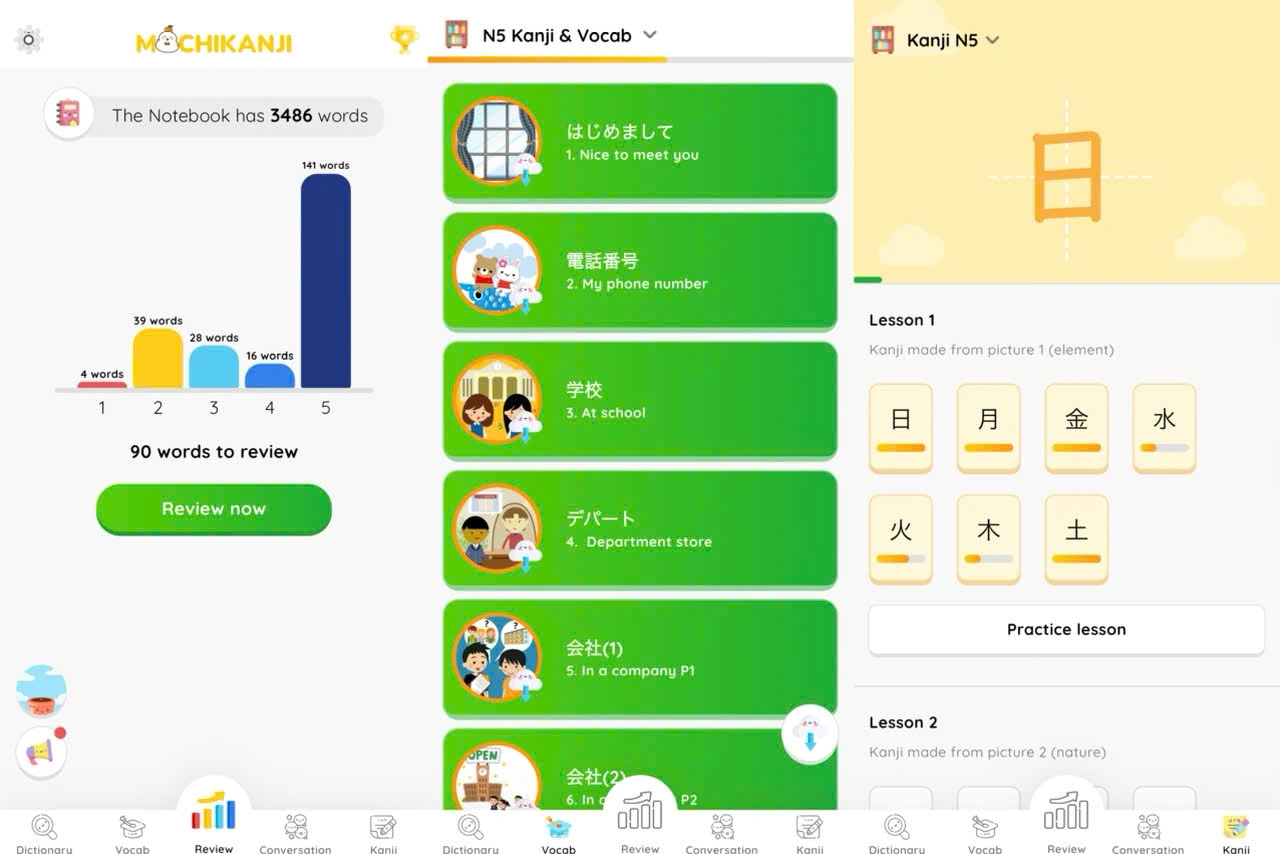
- Create Mnemonics: Mnemonics are invaluable in Kanji learning. For example, the Kanji 山 (mountain) can be remembered by imagining the three peaks of a mountain. Create vivid mental images that link the Kanji’s meaning and sound. This helps solidify the connection between the character and its meaning.
- Practice with Kanji in Context: Reading Kanji in context will help you understand how they are used in real sentences. Start by reading simple materials like manga, children’s books, or websites aimed at learners. MochiKanji also offers context-based exercises, allowing you to practice Kanji in sentences and see how they function in everyday language.
Conclusion
The Japanese writing system is a unique and intricate combination of Hiragana, Katakana, and Kanji, each serving its specific function. While learning these scripts can seem challenging, with consistent practice, dedication, and effective strategies, you can gradually master them. Start by focusing on Hiragana and Katakana, the phonetic scripts that form the foundation of Japanese grammar and vocabulary, before moving on to the more complex Kanji. By breaking your learning into manageable steps and practicing regularly, you’ll gain proficiency in reading and writing Japanese and unlock a deeper understanding of the language.


